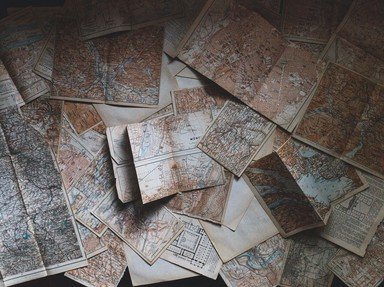Quiz Answer Key and Fun Facts
1. Alexander the Great's military expedition into Asia was essential for establishing relations between Ancient Greece and the vast lands of Central and South Asia. What major river of the Indian subcontinent did Alexander reach before he was forced to turn back?
2. During their long trek to China, Marco Polo, his father and his uncle encountered many unfamiliar sights - including animals. One of those animals, a subspecies of "Ovis ammon", which Polo saw while crossing the Pamir range, was later named after him. What kind of animal is it?
3. The expedition led by Francisco Vázquez de Coronado in what is now the southwestern US aimed to find the legendary Seven Cities of Gold. Though they did not find any riches, he and his men were the first Europeans to sight which iconic natural landmark?
4. In the early 18th century, Peter the Great conceived the massive endeavour known as the Great Northern Expedition, meant to map the eastern reaches of Siberia, and possibly find a north-east passage connecting Europe with the Pacific Ocean. What famous explorer was appointed as the leader of the expedition?
5. German scientist Alexander von Humboldt's exploration of the Americas was extremely influential in the development of modern geography and natural science. In January 1802, he and his companions climbed which lofty dormant volcano in Ecuador - whose summit is the farthest point from the center of the Earth?
6. The celebrated Corps of Discovery expedition led by Meriwether Lewis and William Clark departed in May 1804 from Camp Dubois (Illinois), reaching the mouth of the Columbia River at the end of the following year. In what present-day US state would you find Fort Clatsop - where the explorers spent the winter before heading back east?
7. The second half of the 19th century was marked by a number of high-profile expeditions to Africa - in particular its vast, almost unknown central regions - by explorers such as David Livingstone, Henry Morton Stanley, and John Hanning Speke. What were those expeditions trying to find?
8. In the mid-19th century a large number of expeditions were organized to explore the huge interior of the Australian continent. Those challenging treks would have been almost impossible without the contribution of which large, non-native animals?
9. In 1950, an expedition of the US Air Force crossed the extremely inhospitable sand desert known as the Empty Quarter to collect animal specimens and test desert survival procedures. In what part of the world would you find this desert?
10. Overland explorations of Antarctica have been conducted since at least the mid-20th century. The first overland crossing of the continent, the Commonwealth Trans-Antarctic Expedition of 1955-1958, involved what famous figure, who had achieved a remarkable first in 1953?
Source: Author
LadyNym
This quiz was reviewed by FunTrivia editor
ponycargirl before going online.
Any errors found in FunTrivia content are routinely corrected through our feedback system.

